- Submissions

Full Text
COJ Electronics & Communications
Augmented Reality Waveguide Design based on Superstructure Grating
Xiaoming Guo, Sen Ma and Guobin Ma*
Shenzhen Lochn Optics Technology CO. LTD, China
*Corresponding author: Guobin Ma, Shenzhen Lochn Optics Technology CO., LTD., China
Submission: August 03, 2022;Published: November 22, 2022

ISSN 2640-9739Volume2 Issue4
Abstract
In recent years, Augmented Reality (AR) technology has gained much attention due to its disruptive and revolutionary nature. Thanks to the advanced nano--imprint lithographic technique, diffractive waveguide based display becomes research hotspot. There are three main types of diffractive waveguide including one dimension grating, two-dimension grating, and volume holography. The diffractive waveguide uses one dimension grating or two-dimension grating to expand pupil. Because of the limitation of grating structure, the design is limited by freedom. In this paper, we proposed a new superstructure grating in the diffractive waveguide. We analyze the diffractive orders of out-coupling grating in K domain. In waveguide, uniformity of field of view and Moving Eyebox (MEB) increase. The waveguide design was verified using virtual lab fusion and fabrication. The result is as expected. This diffractive is matched with Laser Beam Scanning engine (LBS), whose volume is smaller. This scheme can be used in the consumption augmented reality.
Keywords: Augmented reality; Diffractive waveguide; Superstructure grating; Laser Beam Scanning
Introduction
Augmented Reality (AR) or Mixed Reality (MR) merges the virtual information into the real scene, which has been widely used in life. The AR glass would take the place of mobile phone as a powerful computing platform of daily life. Nowadays, AR, is emerging in various industries, especially in security field and industrial field. AR shows great advantages in Information interaction mode. The mature solution of augmented reality glass mainly contains the prism, the birdbath optical path method, free-form surface solution [1-4], and light guide or waveguide method. The first three have serious downsides, whose form factor is bulky for wearing display. To address this issue, a waveguide display solution is a good candidate. The wave-guide method mainly includes geometric waveguide solution [4], Surface relief grating [5] or holographic bragg grating waveguide method [6]. Geometric waveguide shows excellent display performance using semi-reflection mirror array, but the Field of View (FOV) and Moving Eye-Box (MEB) are restricted. In addition, it will also introduce dark stripe which damages the image quality. Therefore, geometric waveguide is not the best solution. Volume holography waveguide is limited by mass production. Surface Relief Grating (SRG) waveguide is emerging as a promising solution, due to its easier mass production by using standard nano-imprinting lithography. On the other hand, SRG can provide huge FOV and large MEB. However, the uniformity of FOV and uniformity of colors are still challenging.
As shown in Figure 1, the incident light is coupled into the waveguide plate by the incoupling grating region, which can total reflection propagate in the waveguide, light is coupled out to human eye by the out-coupling gratings region. SRG based waveguide uses one dimension grating or two dimension grating for expanding MEB. Two-dimension grating solution will have in-coupling region and out-coupling region. For one dimension grating, there needs a transition region.
Superstructure Grating
The Figure 2 shows the structure of meta-grating designed by Lochn Optics Hi-Tech Co., Ltd. The Figure 3 shows the distribution of meta-grating in k domain. The Figure 4 shows periodic meta-grating structure. The energy distribution among diffraction orders can vary in a large range by tuning this meta-grating structure.
Figure 1:Waveguide system.
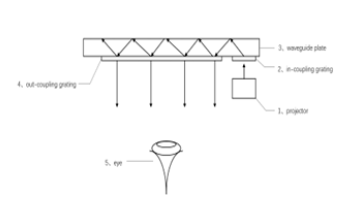
Figure 2:Superstructure grating.
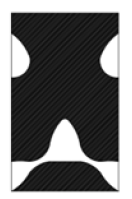
Figure 3:K domain.
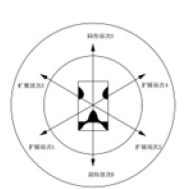
Figure 4:Superstructure grating.
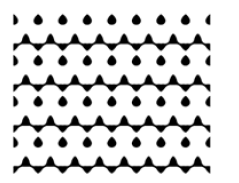
Diffractive Waveguide based on Superstructure Grating
The Figure 5 shows the waveguide model based on the metagrating in Virtual Lab. The Figure 6 shows LBS light engine from Lochn Optics. The Figure 7 shows the display result in the real world from Lochn Optics LBS waveguide.
Figure 5: Waveguide simulation.

Figure 6: LBS engine.
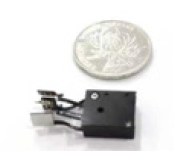
Figure 7: Display result.

Conclusion
Compared with traditional DLP, LCOS and other light engines, the LBS (Laser Beam Scanning) light engine has smaller size, larger FOV, higher brightness, lower energy consumption and higher contrast, so it owns so many advantages and a brighter future. Lochn Optics will continually increase the investment on LBS module matched with diffractive waveguide based on superstructure grating. LBS light engine matched with superstructure grating waveguide designed by Lochn Optics successfully complete the initial verification and meet the expectation. Later on, Lochn Optics will speed up the iteration of meta-grating waveguide and metagrating module to manufacture more versatile AR waveguide module which can apply to any situation.
References
- Dewen C, Yongtian W, Hong H, Talha MM (2009) Design of an optical see-through head-mounted display with a low f-number and large field of view using a freeform prism. Appl Opt 48(14): 2655-2668.
- Wang Q, Cheng D, Wang Y, Hua H, Guofan Jin (2013) Design, tolerance, and fabrication of an optical see-through head-mounted display with free-form surface elements. Appl Opt 52(7): C88-C99.
- Wang Y, Cheng D, Xu C (2017) Freeform optics for virtual and augmented reality. Optical Design and Fabrication 2017.
- Qingfeng W, Dewen C, Yongtian W, Hong H, Guofan Jin (2013) Design, tolerance, and fabrication of an optical see-through head-mounted display with free-form surface elements. Appl Opt 52(7): C88-C99.
- Cheng P, Zeyang L, Yajun P, Xianxin Z, Huaiyu C, et al. (2018) Design of a high-performance in-coupling grating using differential evolution algorithm for waveguide display. Opt Express 26(20): 26646-26662.
- Yan Z, Li W, Zhou Y, Kang M, Zheng Z (2011) Virtual display design using waveguide hologram in conical mounting configuration. International Society for Optics and Photonics 50(9): 1-9.
© 2022 Guobin Ma. This is an open access article distributed under the terms of the Creative Commons Attribution License , which permits unrestricted use, distribution, and build upon your work non-commercially.
 a Creative Commons Attribution 4.0 International License. Based on a work at www.crimsonpublishers.com.
Best viewed in
a Creative Commons Attribution 4.0 International License. Based on a work at www.crimsonpublishers.com.
Best viewed in 







.jpg)






























 Editorial Board Registrations
Editorial Board Registrations Submit your Article
Submit your Article Refer a Friend
Refer a Friend Advertise With Us
Advertise With Us
.jpg)






.jpg)














.bmp)
.jpg)
.png)
.jpg)










.jpg)






.png)

.png)



.png)






